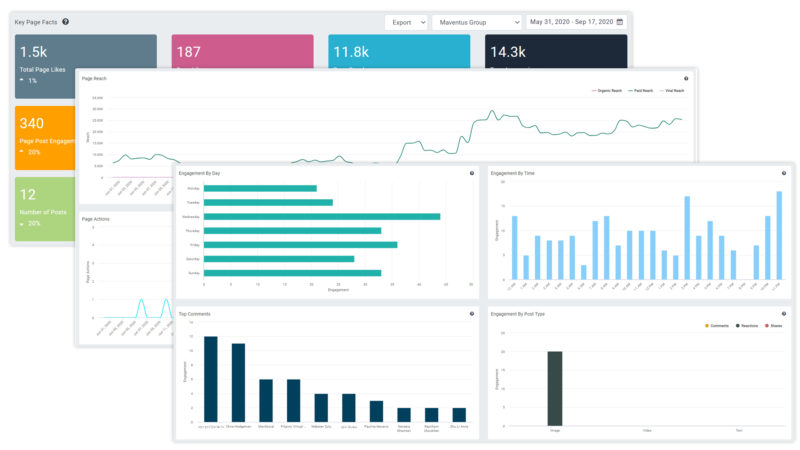
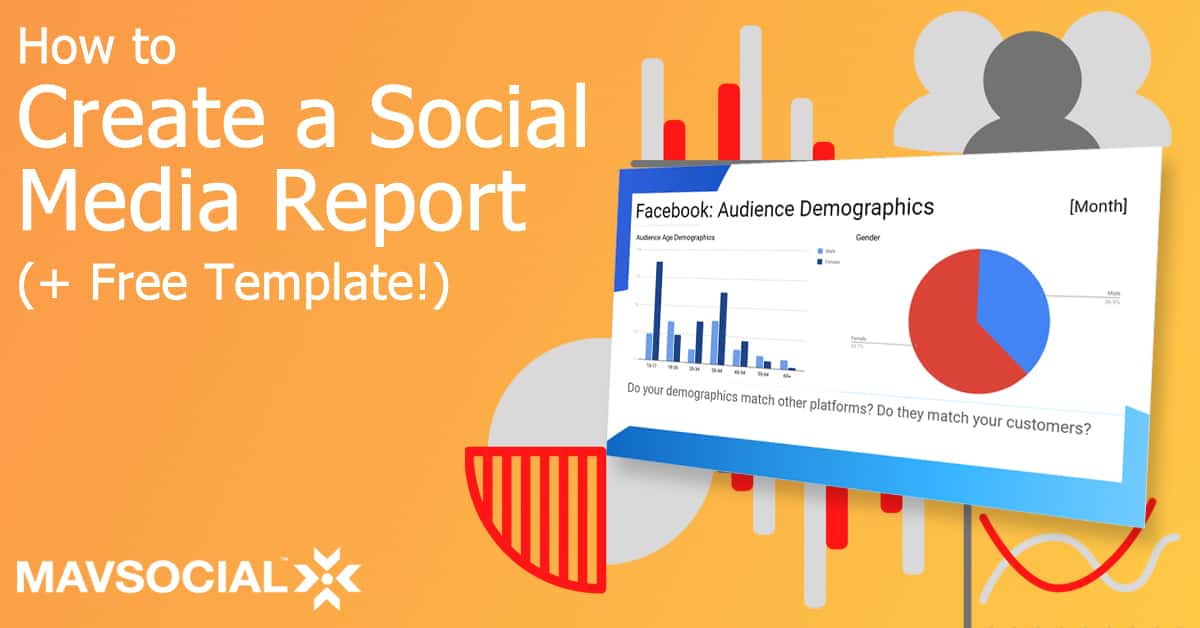
Social media reports are essential. There’s no way around it. If you don’t want to fall behind the competition, you absolutely must track your social media performance and apply the insights to your marketing strategy. This process can feel pretty overwhelming. Being responsible for a business’s social media marketing comes with pressure. Your boss or clients need to see results. But social media reporting isn’t exactly easy – and explaining your progress to your boss, colleagues, or clients can feel downright impossible. Thankfully it isn’t. If you’re looking to improve your social media strategy and justify your efforts, this article’s for you. We’ll show you how to create a social media report in just six simple steps. Want to cut to the chase?
We’ve put together a free social media report template download to get you started. If you’re not sure how to get started, this free social media report template will save you time and set you up for success.
It’s a Google Slides file that you can update with your own content and branding. You can customize this template to showcase your social media performance in just a few clicks!What should you include in your social media marketing report, and how should you go about creating one? Here are six simple steps that will show you how to create a social media report.
First things first: Before you pull statistics from your social media reporting tools, you need to define your target audience so you can tailor your report to their needs. For example, higher-ups may care most about conversions and how your social efforts link to revenue. Plus, they may not be familiar with social media jargon. On the other hand, marketers may want to understand nitty-gritty, campaign-specific metrics. Whoever it is, take some time to identify your target audience and their specific needs. Then, base your social media marketing report on this information.

Next, you need to choose a social media reporting frequency. Will you produce reports weekly, monthly, or quarterly? Weekly reports can help you stay on top of your game. However, they can also be skewed by anomalies. Quarterly reports reveal trends over time, but going so long between reviews could result in missed opportunities. If you’re not sure where to start, consider producing monthly reports. It’s far less work than weekly social media reporting, but will still provide an opportunity for you to spot and capitalize on trends.
Again, it’s best to base your KPIs on the needs of your audience.
Once you’ve decided which KPIs to use, capture the relevant data from your social media report tool or the platform’s native analytics.
MavSocial’s social media reporting software allows you to access a range of metrics for specific campaigns, groups, or platforms. You can then add this information to the free social media report template.
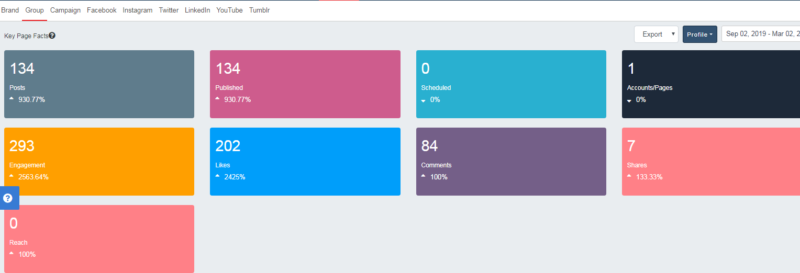
Metrics mean nothing by themselves – you need to add some context to help readers better understand your social media report.
You can start by comparing your results to previous months. Doing this will help to demonstrate your social media performance progress over time.
Next, frame your data against your goals.
Use “SMART” goals – goals that are specific, measurable, relevant, and timely. By doing this, you can show that your efforts are directly driving the social media performance.
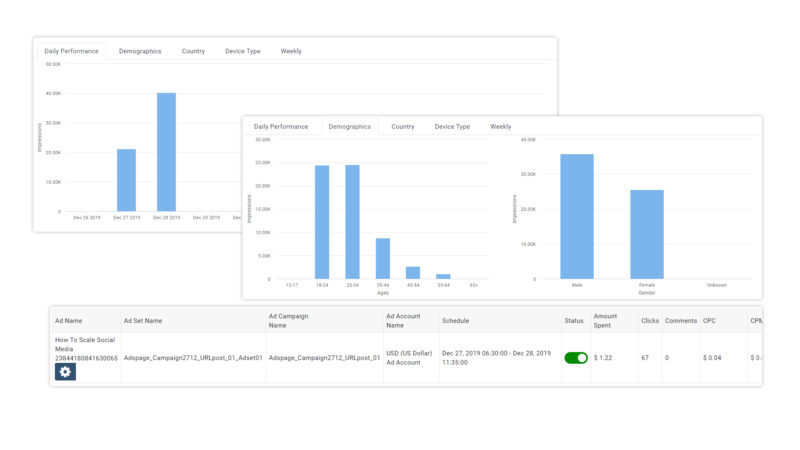
Then, add some industry context.
For example, hitting 500 Twitter followers may appear unnoteworthy – until you learn that your industry’s average number of followers is just 100.
Here’s what to do: For each of your KPIs, research some industry data to help contextualize your results. For example, find out what the average YouTube ad conversion rate is in your industry.
Finally, include some competitive context.
In other words, how do your results compare to key competitors? Focus on metrics that show promise.
For instance, perhaps one of your key competitors has far more followers than your brand. However, you may be able to show that your posts are getting more engagement and shares.
Numbers can be dry, so jazz it up a little.
If you want your social media report to engage readers, it helps to create visual representations of your data. For example, graphs can make data far easier to digest.
(Alt tag. Social Media Reporting Tip: Add Graphs)
MavSocial’s social media reporting dashboard makes it simple to produce and customize presentation-ready visual PDF reports in just a couple of clicks.
Also, make sure to add visual examples to showcase your social media performance. You could add examples of viral content, high-performing ads, or shoutouts from industry influencers, such as this one from SEO specialist Ann Smarty:
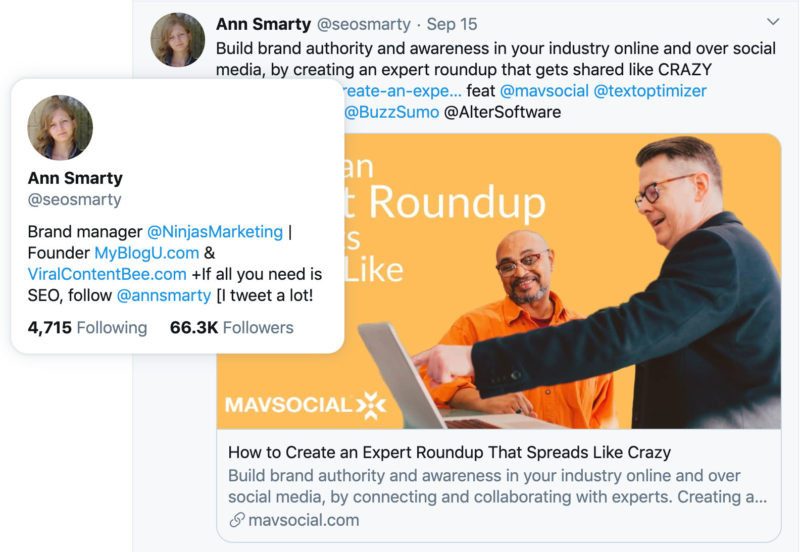
If you download our free social media report template, there are ready-made spots to showcase these examples.
Social media reporting isn’t just about looking backward, it’s also about looking forward.
So, at the end of your social media report, summarize and highlight the key takeaways – and crucially – your next steps.
Do you plan to publish more video content, run more ads, or create a new campaign?
Whatever it is, outline how you plan to respond to the insights you’ve gained from the report, and set new SMART goals.
Social media reporting can help you justify your efforts and gain valuable insights that you can use to improve your social media performance.
If you want to put together an impactful social media report, download our free social media template, and follow these six simple steps: